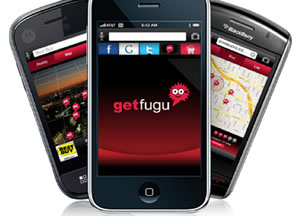
Given the health risks of carrying a smartphone (or any kind of mobile device) too close to the body for extended periods, I try to always remove electronic devices from my pockets whenever I can. For ten years this has never caused a problem until Saturday. This marked the first time in more than a decade that I walked off and forgot my smartphone.
Now I’ve had the joy of reporting my lost phone to T-Mobile and getting a less than helpful response. Not because the agent I spoke with didn’t try to be helpful, but because the customer service representative was trapped inside of a service experience that wasn’t designed to meet the goals of the customer.
First I must mention that I don’t have a find my phone type app installed on my phone because I don’t like the idea of someone tracking me all the time. Second, yes, I know that even with location awareness or GPS turned off that my phone is being tracked anyways, but I still like to maintain the illusion that my every move isn’t being tracked. So, please humor me.
The fact is that T-Mobile could tell me exactly where my phone is even without such an app, but then they would have to breach the illusion and admit that they’re always tracking where every phone is at all times. Not such a good customer experience.
Redesigning the Lost Smartphone Experience
I’m only one person so this list won’t be as good as if I was working on this with a small team and prototyping with customers, but let’s ignore that for now and try to come up with a list of customer goals (and thus opportunities to delight) in the lost smartphone scenario:
- I don’t want someone to use my phone after I lose it to make calls that I’ll have to pay for (international calls, premium calls, etc.)
- I don’t want someone to buy anything (apps, music or other content that I’ll have to pay for)
- I don’t want someone to call my contacts
- I don’t want someone to use my apps and make in app purchases
- I don’t want someone to use my texting function (SMS) – read, send, etc.
- I don’t want someone to use my email – read, send, etc.
- I don’t want someone accessing my photos
- I don’t want someone to steal information about my contacts
- I want to be able to call my phone to try and speak with the person who found it so I can try and get it back
- I want the person to be able to call me or T-Mobile to let me know that they’ve found my phone
In short, I don’t want someone who finds my phone to be able to do anything other than contact me to let me know when and where I can come pick it up.
But, when I called to T-Mobile to report my phone lost the only option was to have the phone disabled. Prior to doing so, calling my phone was going straight to voicemail, and maybe I should have left a voicemail, but I didn’t, I thought I would try again later. After they disabled my phone, instead of getting voicemail I got a message saying the phone has been reported lost and that I wouldn’t be able to leave a voicemail. This is partially helpful, but not completely. Now I can’t call the phone and if someone has found the phone, they can’t try to contact anyone to arrange a pickup.
T-Mobile has met goal #1 (and possibly #2-4), but likely they could access #5-8 (able to read but probably not to send).
But, there are many other goals that have not been met. Most importantly, T-Mobile has actually made it less likely that I will get my phone back because I have no way of communicating with the person who may have my phone.
What could T-Mobile do to make this experience better?
Simple.
When a phone is reported lost, T-Mobile should make it so that the phone can only call T-Mobile. If the person calls, then T-Mobile knows which number is calling, can get information from the caller to connect the two parties to arrange a pickup, and pass on the contact details to the subscriber via pre-arranged methods.
Second, T-Mobile should allow designated numbers to call the phone, so that the subscriber can try to get in touch with whoever found the phone.
Third, T-Mobile could call the phone every 15-30min with a robot until someone answers and connect them with a T-Mobile representative.
These three small changes to their lost phone service design would make an immediate positive impact in the customer experience for thousands of customers.
How else could T-Mobile make the experience better?
Image credit: easyhacker.com
![]() Sign up here to get Human-Centered Change & Innovation Weekly delivered to your inbox every week.
Sign up here to get Human-Centered Change & Innovation Weekly delivered to your inbox every week.
 Nobody, including people inside Microsoft, would argue with the fact that Microsoft beat Google and Apple to the Mobile OS marketplace, but lags them both in terms of market share.
Nobody, including people inside Microsoft, would argue with the fact that Microsoft beat Google and Apple to the Mobile OS marketplace, but lags them both in terms of market share.